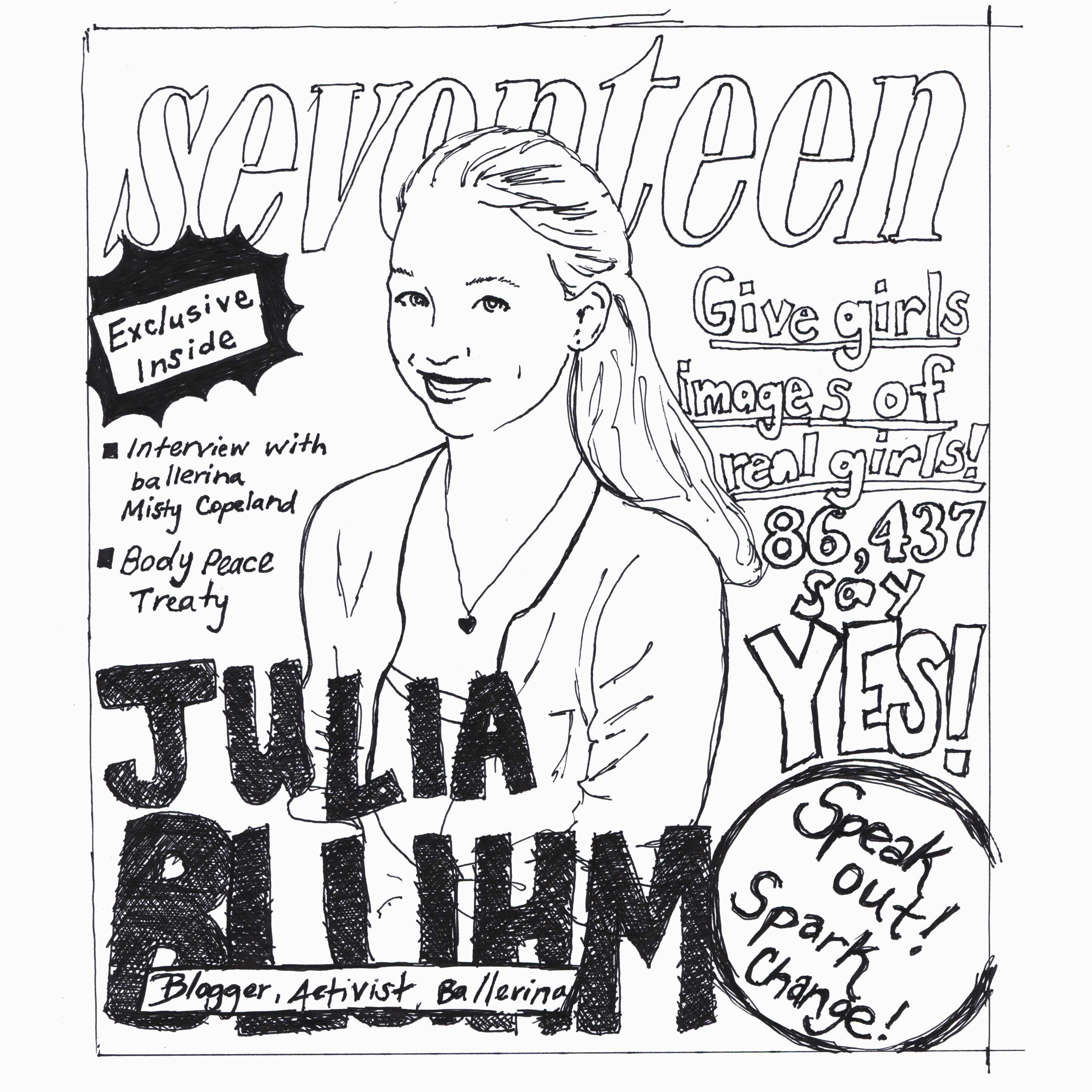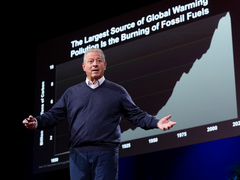
 15-year old Julia Bluhm is a ballet dancer and body image activist. That’s right. Ballet, an activity that conjures images of super slim prima ballerinas gracefully passing up french fries in favor of pirouettes. And body image activism, where passionate advocates remind us all that we’re beautiful just the way we are. You might see a disconnect, but Julia sees an opportunity; having seen her ballet friends struggle with body issues, she decided to do something about it.
15-year old Julia Bluhm is a ballet dancer and body image activist. That’s right. Ballet, an activity that conjures images of super slim prima ballerinas gracefully passing up french fries in favor of pirouettes. And body image activism, where passionate advocates remind us all that we’re beautiful just the way we are. You might see a disconnect, but Julia sees an opportunity; having seen her ballet friends struggle with body issues, she decided to do something about it.
In April 2012, she and her friend Izzy started a Change.org petition asking Seventeen magazine to feature fewer photoshopped images of models. They didn’t expect a big response, so what happened next was a shock.
Within days, the petition had over 25,000 signatures. One night in early May, Julia came home from ballet to find that she was booked to fly from Maine to New York the next morning to appear on CNN and ABC Nightline. While she was in New York, she met up with SPARK, a feminist organization she blogs for, and staged a protest in front of Seventeen magazine’s headquarters. The media showed up in droves. In the end, over 86,000 people signed Julia’s petition.
That July, Seventeen magazine issued a Body Peace Treaty, signed by all the editors, agreeing to show real girls in their pages. For Julia, it was proof that she could make a difference. It has inspired her to keep blogging about body image issues, and she’s excited to see that other girls have followed her lead, petitioning other magazines such as Teen Vogue and companies including H&M.
We spoke with Julia about body image and teen activism for our series on inspiring young voices. An edited version of our conversation follows. My first question: how does she see the disconnect between ballet and body image? Here’s Julia —
The ballet world is changing. There was a time when you had to be super skinny, but now there are a lot more dancers who are muscular. Misty Copeland is one of my idols — she’s a soloist at American Ballet Theatre — and she’s a really muscular, strong dancer. A lot of people really like that about her. There are more and more dancers like her who don’t fit the perfect definition of a ballet body.
When it comes to body image and media issues, what would you say to other girls your age?
Talk about it. Some teenagers feel weird talking about issues like feminism or body image, even though we think about it. But you can watch an ad with your friends and say, ‘we shouldn’t be thinking like that.’ You might feel like a know-it-all at first, but if we all get involved, then it won’t feel so weird.
And what would you say to the boys?
The same thing: question the media. Boys see these messages about girls being less strong or important than men, or being passive and sexualized, and that can be really harmful. It’s important for them to start questioning the media too. To say, that’s not realistic, the girls in my school or town don’t look like that, and to start realizing that the media is not always truthful.
I didn’t really learn about the sexualization of women in the media until college. How did it come onto your radar when you were still so young?
I always knew it was there. I saw ads [sexualizing women] on TV, but just didn’t know the word for it. Then, when I was 13, I joined SPARK. They educated me about what sexualization really was and what I could do about it. That’s how I started to learn.
Are there other changes you see happening now that make you say, ‘yes! more of that!’?
A lot of little things, like H&M had a plus-size line, and in Seventeen magazine, I remember reading a spread about plus-size models. Girls want to see media that’s not shaming girls’ bodies but embracing them. And that’s a good step, but the problem often is that it becomes kind of hypocritical. There might be a spread in Seventeen that talks about positive body image, then flip down a couple pages and there’s a diet plan for flat abs for the summer.
Your generation often gets criticized for not getting involved in some of those issues.
A big problem is that we don’t know where to start or don’t think we can do it, especially because we’re younger. I would say: ‘Do it anyways, even if you’re not sure you’ll be successful’. If there’s something you’re passionate to change, try to change it.
So how can other teens get involved in activism?
Use online resources; there are tons of them. I also encourage people to join organizations and activist groups. Most of the young people who’ve taken action had a group that helped them out. It’s hard to do an action all by yourself, but if you have a team, it makes it a lot more possible.
And finally…what is one thing you know that you wish everyone knew?
That teenagers offer a lot. A lot of times, people think of teenagers as not caring, and that’s a big mistake. We do care about a lot of things, we just don’t know where to start. What’s important for adults to know is that we are passionate about these issues, we care, and adults can help by giving us the resources to make a difference.
Watch Julia’s talk at TEDxWomen 2012 »
And here, an illustration of Julia created especially for this piece by TED’s own Emily Pidgeon!
This article is part of a series on young voices, exploring the spirit and wisdom of youth. Read the full series here.











